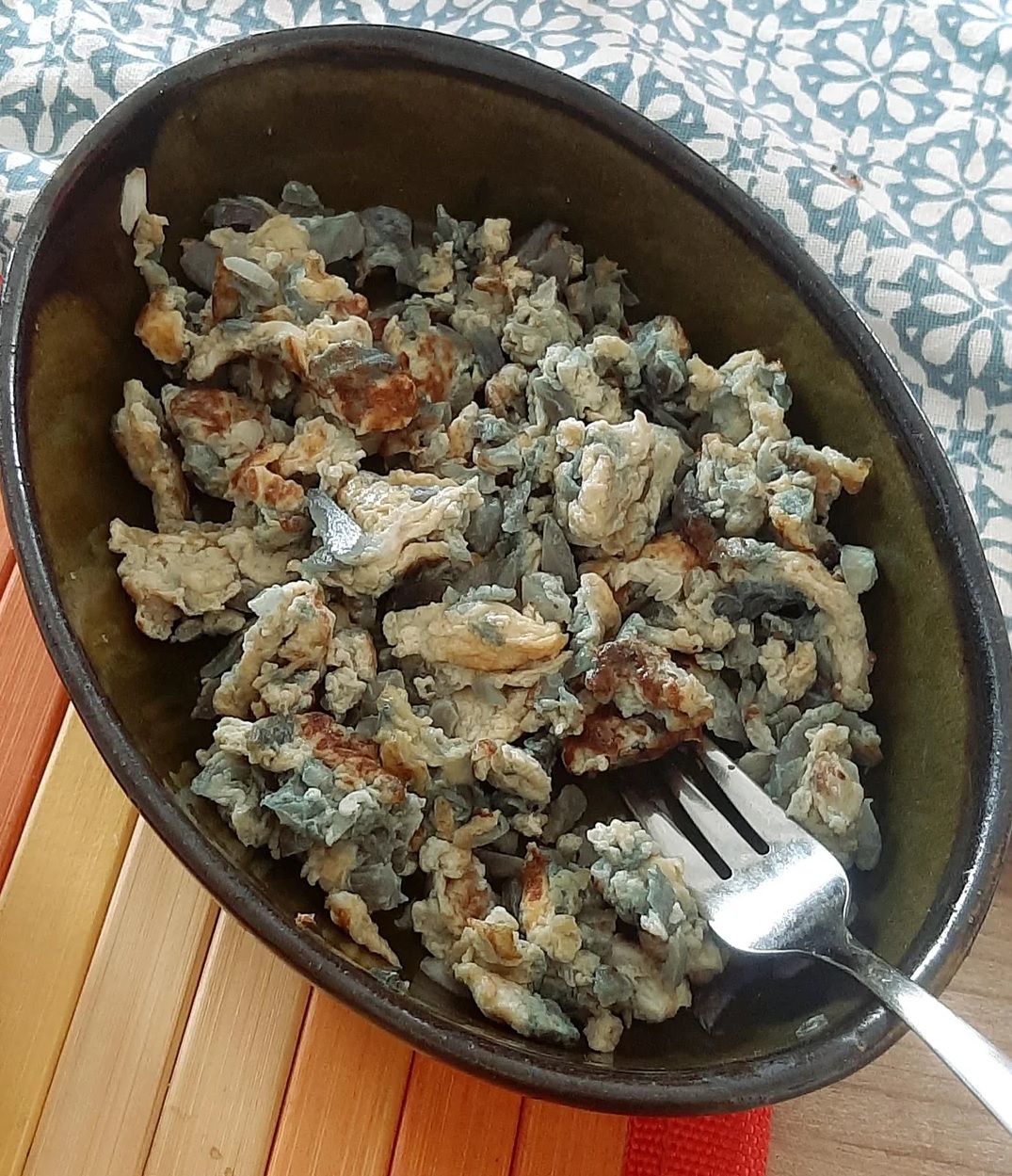Table of Contents
Scrambled eggs are a popular breakfast choice. But how long do they stay good?
Scrambled eggs spoil faster than other foods. Left out at room temperature, they go bad in just a few hours. In the fridge, they last a bit longer, but not forever. Knowing the shelf life of scrambled eggs can help you avoid food poisoning.
In this post, we’ll explore the signs of spoiled eggs and storage tips. Stay safe and enjoy your meals by understanding how long scrambled eggs can last.
Scrambled Eggs Shelf Life

Scrambled eggs are a popular breakfast choice for many. But like all foods, they can spoil. Knowing the Scrambled Eggs Shelf Life is important for Food Safety. This ensures you and your family stay healthy. Let’s explore how long scrambled eggs last in the fridge and the effects of freezing them.
Refrigerated Duration
When you store scrambled eggs in the fridge, they remain safe to eat for a certain period. Understanding Refrigerator Egg Storage can help you avoid Spoiled Eggs Signs. Typically, scrambled eggs can last for about 3 to 4 days in the refrigerator. This is when stored properly in an airtight container.
Here are some Food Preservation Tips for storing scrambled eggs:
- Always place scrambled eggs in an airtight container.
- Keep the refrigerator at or below 40°F (4°C).
- Avoid placing the container near the fridge door, where temperature fluctuates.
- Label the container with the date of preparation.
Checking for Spoiled Eggs Signs is crucial. Look out for unusual smells, changes in color, or a slimy texture. These are clear indicators that the eggs have gone bad. When in doubt, it’s safer to discard them. Following these Egg Storage Guidelines ensures your Cooked Egg Longevity.
You can also read: How Long Does It Take for Spaghetti to Go Bad: Expert Insights
Freezing Effects
Freezing Scrambled Eggs can extend their Scrambled Eggs Shelf Life. This method is especially useful if you want to store them for a longer time. When frozen, scrambled eggs can last up to 1 to 2 months. Here’s how to freeze scrambled eggs properly:
- Let the scrambled eggs cool completely after cooking.
- Divide the eggs into portions for easy thawing.
- Place the portions in airtight freezer bags or containers.
- Remove as much air as possible before sealing.
- Label the bags with the date of freezing.
Thawing frozen scrambled eggs is simple. Transfer them to the refrigerator a day before you plan to eat them. Once thawed, reheat them in a microwave or on the stove. The texture might change slightly, becoming a bit more watery. This is normal and doesn’t affect the taste.
Understanding the Egg Spoilage Factors and practicing Safe Food Handling can help you enjoy scrambled eggs longer. Freezing and refrigeration are effective ways to preserve their freshness. By following these steps, you can ensure your food remains safe and delicious.
Signs Of Spoilage
Scrambled eggs are a popular breakfast choice, but they don’t last forever. Understanding how long they stay fresh can help you avoid foodborne illnesses. Signs of spoilage are crucial in determining if your scrambled eggs are safe to eat. Let’s explore the visual cues and smell indicators to watch for.
Visual Cues

Observing scrambled eggs can reveal a lot about their freshness. If you notice any changes in color or texture, this could mean the eggs have gone bad.
Here are some visual cues to watch for:
- Discoloration: Fresh scrambled eggs have a bright yellow color. If they turn green or gray, they are no longer safe.
- Dryness: Fresh eggs are moist. If they become dry or crusty, it’s a sign of spoilage.
- Mold: Any visible mold indicates the eggs are spoiled and must be discarded.
Another way to check is to look at the texture. Fresh scrambled eggs have a soft, fluffy texture. If they become watery or rubbery, they are no longer safe to eat.
Proper refrigeration is essential to maintain egg freshness. Scrambled eggs should be stored in an airtight container and kept in the fridge. This helps preserve their shelf life and prevents bacteria growth.
Smell Indicators
The smell of scrambled eggs can also indicate their expiration timeline. Fresh scrambled eggs have a mild, pleasant smell. Spoiled eggs, on the other hand, have a distinct and unpleasant odor.
Here are some smell indicators to be aware of:
- Sour Odor: A sour smell is a clear sign that the eggs have gone bad.
- Rotten Smell: If the eggs emit a rotten or sulfur-like smell, they are not safe to eat.
It’s important to trust your sense of smell when checking scrambled eggs. If you detect any unusual or strong odors, it’s best to discard them.
Cooked eggs storage plays a vital role in their scrambled eggs shelf life. Always store them properly in the fridge to prevent spoilage. This is a key aspect of food preservation and food safety.
Remember, scrambled eggs are a perishable food. They should be consumed within a short period to ensure they are safe and delicious.
Proper Storage Tips
Scrambled eggs are a popular breakfast choice, but they do not last forever. Understanding how long scrambled eggs can be kept safely is important. Proper storage tips can help extend their shelf life. Let’s explore the best ways to store scrambled eggs and keep them from going bad quickly.
Container Choices
Using the right container for scrambled eggs is crucial. It helps keep them fresh and safe to eat. Best storage containers for eggs should be airtight. This prevents air and bacteria from spoiling the eggs.
Here are some container choices:
- Glass Containers: These are durable and do not absorb odors.
- Plastic Containers: Ensure they are BPA-free to avoid harmful chemicals.
- Vacuum-Sealed Bags: These are great for longer storage.
Using these containers can help maintain the scrambled eggs’ quality. It is part of the essential culinary hygiene practices to prevent foodborne illnesses.
Temperature Control
Temperature control is key to the safe storage of scrambled eggs. Keeping the refrigerator temperature at or below 40°F (4°C) is vital. This slows down bacterial growth, which causes spoilage.
Follow these egg preservation tips:
| Storage Method | Recommended Temperature | Storage Time |
|---|---|---|
| Refrigerator | Below 40°F (4°C) | Up to 3-4 days |
| Freezer | 0°F (-18°C) or lower | Up to 1 month |
Always store scrambled eggs in a cool place. Leftover egg storage in the refrigerator is safe for up to four days. For longer storage, freezing is an option. These food safety guidelines help ensure your eggs stay fresh.
Food Safety Practices
Scrambled eggs are a delicious and easy meal. But how long does it take for scrambled eggs to go bad? Understanding Food Safety Practices is essential to prevent Egg Spoilage. Knowing how to store and manage scrambled eggs properly can help keep your meals safe and tasty.
Cooking Guidelines
Proper cooking is key to ensuring Food Safety Scrambled Eggs. To make sure your scrambled eggs are safe to eat, follow these Egg Storage Guidelines:
- Cook eggs until they are firm. Runny eggs can harbor bacteria.
- Use a clean pan. Avoid using dirty or contaminated cookware.
- Avoid cross-contamination. Keep raw eggs separate from other foods.
Meal Prep Scrambled Eggs can be convenient, but safety is crucial. Scrambled eggs should be cooked at a temperature of at least 160°F (71°C) to kill harmful bacteria. If you are cooking for a large group, make sure that all eggs reach this temperature.
Here is a table for Scrambled Eggs Shelf Life:
| Condition | Time Frame |
|---|---|
| Room Temperature | 2 hours |
| Refrigerated | 3-4 days |
| Frozen | 2-3 months |
Leftover Management
Managing Leftover Egg Dishes is important to prevent Spoiled Scrambled Eggs Signs. Proper storage can extend the Cooked Eggs Expiration date. After cooking, transfer scrambled eggs to a clean, airtight container.
Refrigeration Of Scrambled Eggs is essential. Store leftovers in the fridge within two hours of cooking. They will remain safe to eat for up to four days. For longer storage, freeze the eggs in a freezer-safe container.
Here are tips to manage scrambled eggs leftovers:
- Label containers with the date of storage.
- Reheat leftovers to 165°F (74°C) before eating.
- Discard eggs showing signs of spoilage, such as off smells or unusual colors.
Egg Spoilage Prevention is vital for maintaining food safety. Never leave scrambled eggs at room temperature for more than two hours. Always check for Spoiled Scrambled Eggs Signs before consuming leftovers. These practices ensure that your meals remain safe and enjoyable.
Frequently Asked Questions
How Long Can Scrambled Eggs Sit Out At Room Temperature?
Scrambled eggs can sit out at room temperature for up to 2 hours. After that, bacteria can grow rapidly. For safety, refrigerate them promptly.
How Long Are Scrambled Eggs Good After Cooked?
Scrambled eggs are good for up to four days when stored in the refrigerator. Keep them in an airtight container. Reheat thoroughly before eating.
How Can You Tell If Scrambled Eggs Are Bad?
Check for off smell, unusual texture, and discoloration. Bad eggs may smell sour or have a slimy consistency.
Do Eggs Go Bad After 2 Hours?
Eggs can go bad after 2 hours at room temperature. Store them in the fridge to keep them fresh.
Conclusion
Scrambled eggs can spoil quickly if not stored properly. Refrigerate leftovers within two hours. Consume them within three to four days. Always check for signs of spoilage like smell or texture changes. Proper storage helps maintain freshness and safety. Remember these simple tips to enjoy safe and tasty scrambled eggs every time.
Stay informed and keep your meals safe!


